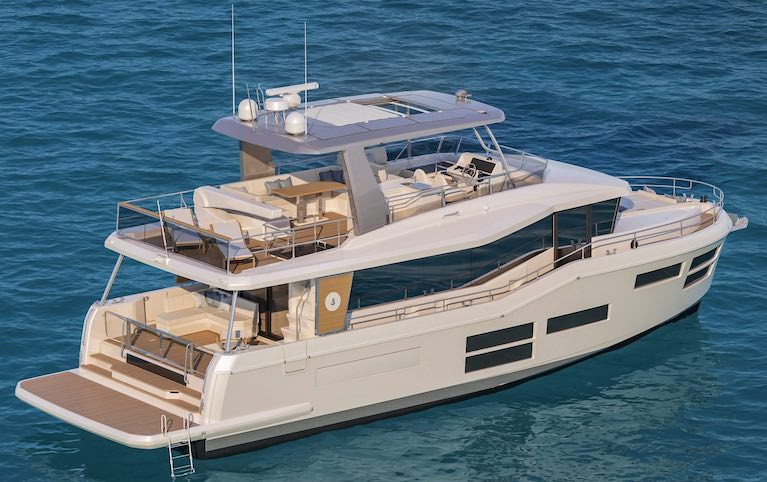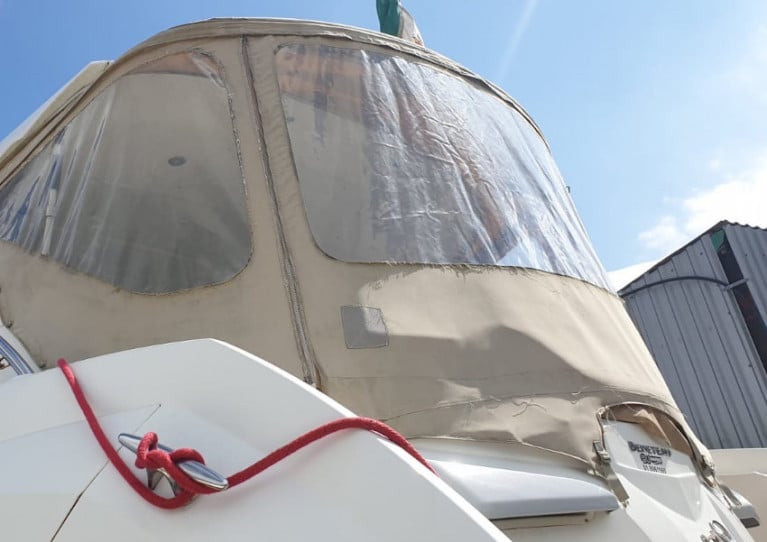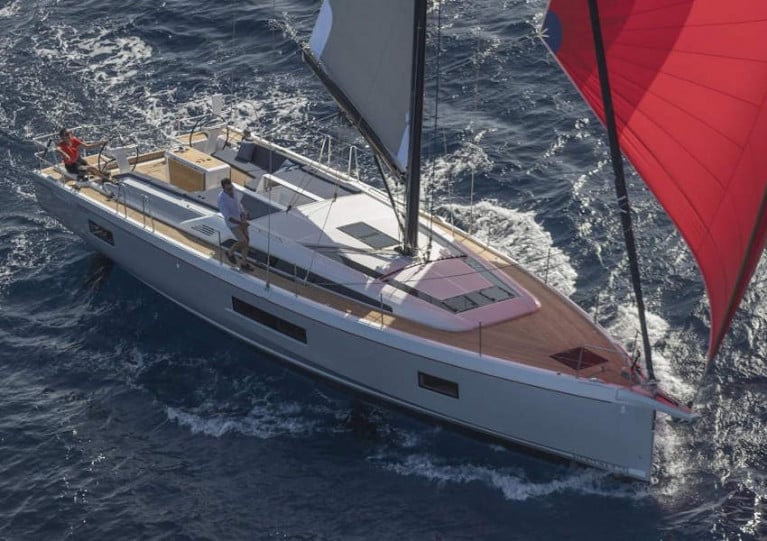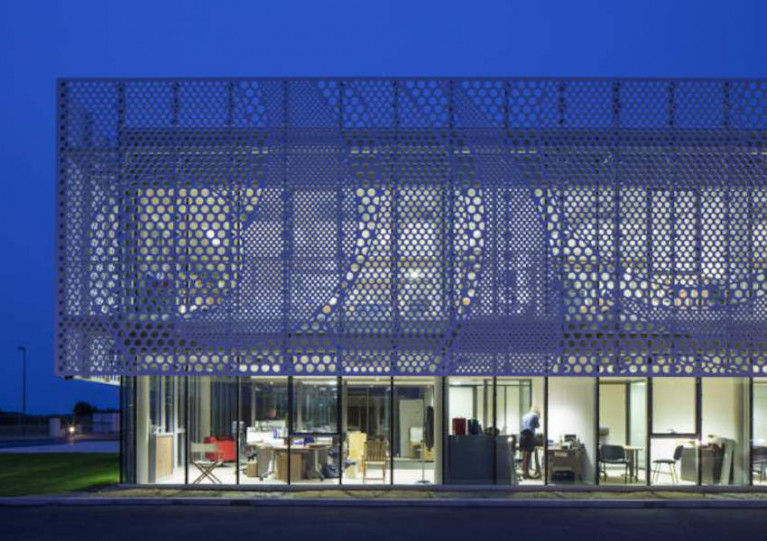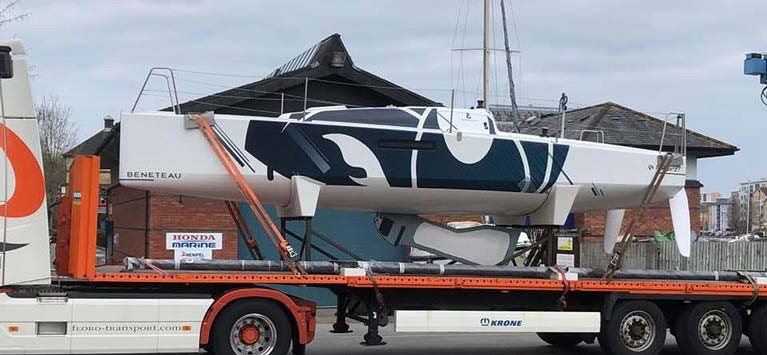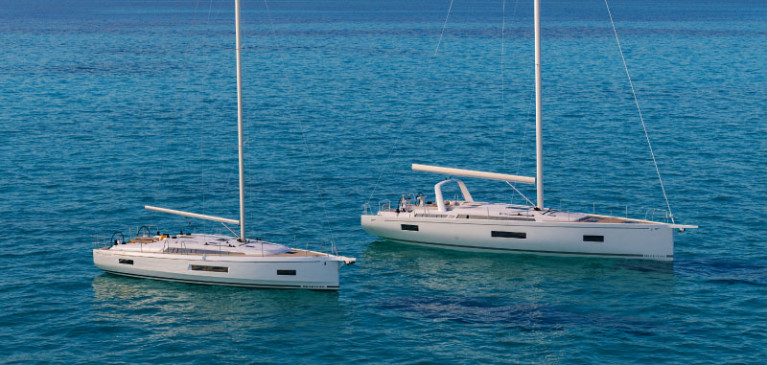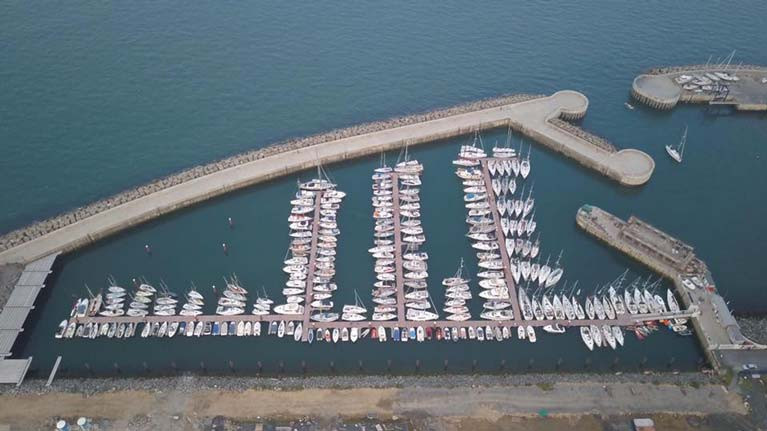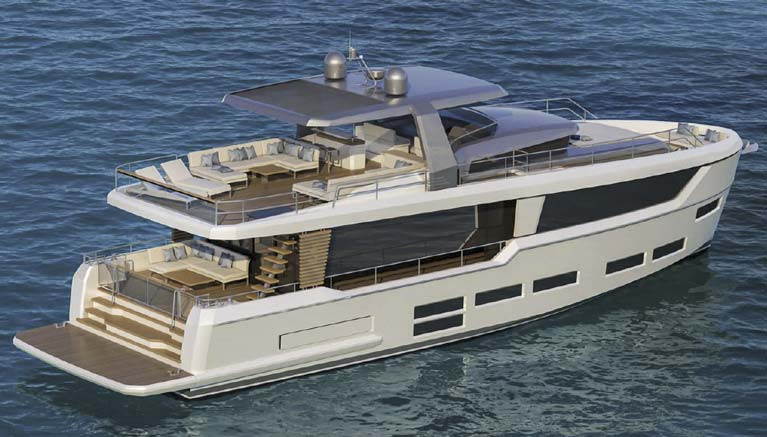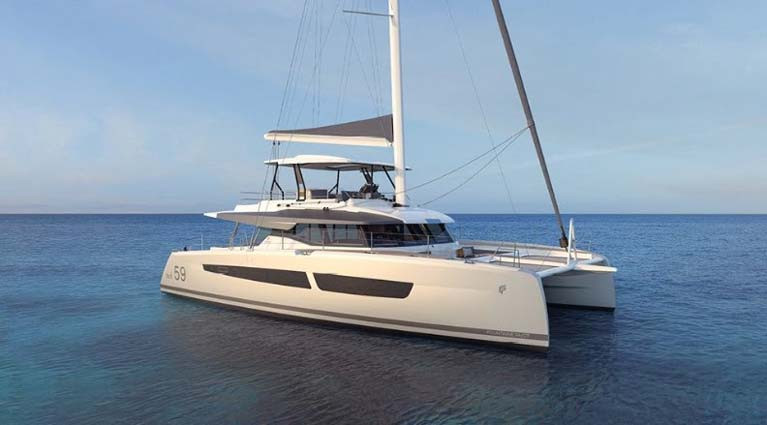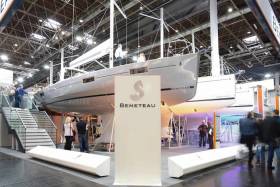Displaying items by tag: BJ Marine
BJ Marine Adds 62-Footer to the Beneteau Swift Trawler Range
Irish Beneteau agents BJ Marine has announced the launch of its Grand Trawler 62.
The Trawler 62 builds on the already established and market-leading range of Swift Trawlers, with boats from 30ft-50ft.
The new Grand Trawler 62 offers incredible interior living space with either 3 or 4 cabin configurations, finished and detailed to a remarkably luxurious standard. She has the ability to do true long-distance cruising, with a range of 900 nautical miles. Ideal for exploring the Irish coast or enjoying the best of what the Mediterranean has to offer.
2020 has again seen the continued popularity Beneteau's Swift Trawler range in Irish waters. BJ Marine handed over the first Swift Trawler 47 sold in the UK/Ireland in August and also had a new Swift Trawler 44 arrive in Greystones.
 BJ Marine handed over the first Swift Trawler 47 sold in the UK/Ireland in August and also had a new Swift Trawler 44 arrive in Greystones Marina
BJ Marine handed over the first Swift Trawler 47 sold in the UK/Ireland in August and also had a new Swift Trawler 44 arrive in Greystones Marina
This builds on an existing fleet for the ’30s, '34s, '35s, '42s and 44s in Ireland. The Swift Trawlers have always been designed for owners to spend extended periods on board and The Grand Trawler 62 takes that to another level, becoming the flagship of the Beneteau powerboat offering.
Get Your Spare Parts For Cruising From BJ Marine
Irish Beneteau agents BJ Marine are the people to see for spare and replacements parts ahead of the next week’s limited return to boating.
Whether it’s a replacement canvas, a cutlass bearing, a stanchion or just a locker catch — whatever it is, get in touch with [email protected] for pricing and availability and they will do the rest.
It’ll pay to act fast on this new cruising-spec Beneteau Oceanis 51.1 ready for delivery in June from BJ Marine.
The popular Oceanis 51.1 is sold out until later this year so this may be the last chance for a while to get your hands on a next-generation cruising yacht with three cabins (2 has) finished with Alpi brushed oak.
Other features include electric genoa winches, mainsail arch, thruster, coastal and offshore electronic packs, wood decks and much more besides.
The ticket price is €399,000 but trade-in is possible if you’re looking for a luxury upgrade to make the most of summer — once coronavirus restrictions allow.
For further details contact James Kirwan at BJ Marine at [email protected] or call +353877712223.
Beneteau Restarts Production As It Prepares New Strategy To Reflect Coronavirus Impact
French boatbuilder Beneteau has restarted production at three of its sites as it announced half-year earnings that showed a 4.7% rise in consolidated revenues by the end of February.
International Boat Industry reports that this was thanks to sustained business in both its boat and housing divisions — though it represents a period before the impact of coronavirus on the economy worldwide.
In response to the current crisis, Beneteau’s CEO has taken a salary reduction and a new strategic plan will follow in July to reflect significant changes in global markets.
Beneteau’s Irish agents are BJ Marine, who recently delivered a new Beneteau 27 sports cruiser — the first in the UK and Ireland — to an Irish Sea customer in Cardiff.
BJ Marine Deliver New Beneteau 27 Sports Cruiser to Cardiff
The first Beneteau 27 in the UK and Ireland was delivered by BJ Marine to a new Irish Sea customer last week. As regular Afloat readers will recall, the deal on the new design was done at January's Boot Dusseldorf boat show by BJ's Cardiff brokerage office.
The First 27 is a small towable sports cruiser packed with potential. She is certified in the CE B category (Offshore) and ISAF OSR Category 3 and is designed for offshore racing by naval architect Sam Manuard, taking inspiration from his own racing experience.
Featuring a hard chine as far as the stem, vertical sides, a good beam on the waterline and twin rudders, she has all the makings of a robust competitive boat. Her hull shape, carbon rig, and deep draught lead keel combine to make here remarkably stable. With her keel taking up 50% of her weight, she is a powerful little yacht. A manually operated hydraulic jack lifts the keel making the First 27 is easy to tow.
The First 27 is also pitched as a boat that is ideal for a few days cruising with a crew of four. The fore cabin has a large double berth while two berths sliding below the cockpit double the length of the saloon seats. The style of the interior is simple yet boldly contemporary, featuring many clever details that everyone will love: folding doors held by magnets, shelves that double up as bags to embark/disembark everyone’s personal effects, a large table on keel casing leg, and the companionway steps housing storage with a bottom compartment the perfect size for a fridge.
Beneteau's New Wave of Cruising Yachts: Oceanis 40.1 & Oceanis Yacht 54
Immediately following last month's Dusseldorf Boat Show, French giant boatbuilder Beneteau has been swift to maket two important launches both particularly relevant for the Irish sailing market writes James Kirwan of Irish agents BJ Marine.
We had a successful outing at the German show with this year’s boat of the year winner in the Family Cruiser category being the Beneteau Oceanis 30.1, one of the stars of last autumn’s Southampton International Boat Show and the Beneteau stand at boot Düsseldorf alike.
Now, in February, the news of these two Oceanis models is another boost for the brand.
Oceanis 40.1
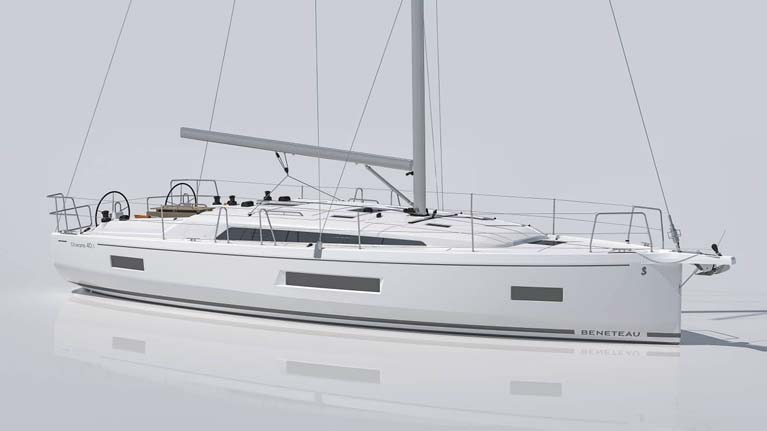 Oceanis40.1 - taller rig option as well as the usual in-mast furling or traditional mainsail with lazy bag
Oceanis40.1 - taller rig option as well as the usual in-mast furling or traditional mainsail with lazy bag
The Oceanis 40.1 replaces the Oceanis 41.1 which BJ Marine sold in great numbers both at home and overseas. The 40.1 offers 3 excellent cabins, made possible by the max beam carried all the way aft, giving two huge aft cabins and providing a massive cockpit on deck. As ever, the Oceanis 40.1 will offer excellent sailing performance in whichever configuration the client wants, noting we offer a taller rig option as well as the usual in-mast furling or traditional mainsail with lazy bag. With a self-tacking jib too, we can really customise the boat for every client. The boat will also come with a choice of the wood interior which can really personalize your boat.
Oceanis Yacht 54
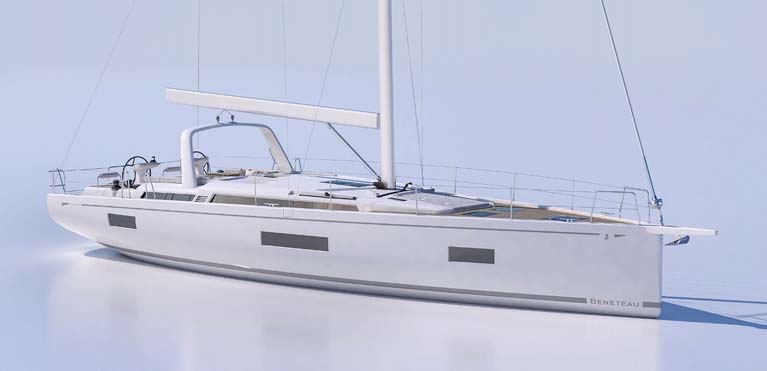 Oceanis Yacht 54 - redesign of the cockpit will set her apart, offering great comfort and making handling the 54 very manageable
Oceanis Yacht 54 - redesign of the cockpit will set her apart, offering great comfort and making handling the 54 very manageable
The new Oceanis Yacht 54, is very much the little sister of the multi-award-winning Oceanis Yacht 62. Finished to an incredibly high standard, the 62 and now the 54, offers something completely different to the market. The level of detailing in the interior, with endless options, ensures that the owner will have a boat exactly as they want it. The redesign of the cockpit will set her apart, offering great comfort and making handling the 54 very manageable for all those that step aboard. Again, with the different rig and keel options, Beneteau really are staying true to their values of designing and building an excellent sailing boat first and foremost and then building the interior and luxuries around that principle.
I will be sailing both boats at the end of April, with clients already booked for sea trials at our sea trial base in Port Ginesta near Barcelona, and we will report back in full to Afloat.ie
The full Beneteau press release on the new models is downloadable below
BJ Marine Yacht Broker Position Available
BJ Marine is looking to recruit a yacht broker for our busy sales office at Greystones Harbour Marina, just south of Dublin.
BJ Marine has a strong network of offices throughout Ireland, the UK and the Mediterranean, representing market-leading brands such as Beneteau (Sail + Power), Sea Ray and Fountaine Pajot.
The successful applicant will be an 'energetic and motivated candidate' with a strong interest in boats and the marine industry. Computer skills are essential.
Brief description of requirements:
- Answering sales enquiries for new and used boats.
- Managing leads and prospects and to seek out new leads.
- Seek out and secure new brokerage listings.
- Participation in National and International Sales events.
- Communicate with fellow employees to generate sales across all markets
- Report to management on activity progress.
Location: Greystones Harbour Marina, Co. Wicklow, Ireland
Salary/Rate: €TBD & Commission
To apply, please send a CV to James Kirwan, BJ Marine Group Manager, at [email protected]
Beneteau Launch Two 'Project E' Passagemaking Yachts
French giant Beneteau has announced the launch of two passage-making yachts at Boot Dusseldorf this week.
The aim, according to James Kirwan of Irish agents BJ Marine, is to capitalise on the success of its Swift Trawler range, and the new yachts to be known and coded as 'Project E' to highlight they are built for: Exceptional cruises, long-distance blue water Expeditions, and unforgettable Experiences in Extra-voluminous
spaces.
These two yachts, one of which is over 20 metres (over 65’) long, are the result of Beneteau’s collaboration with Massimo Gino (Nauta Design) and Amedeo Migali (MICAD) and build on the highly successful Trawler range of practical, spacious boats, with a considerable cruising range, and put Groupe Bénéteau’s experience in producing luxury boats to good use.
The new boats have a distinctive displacement hull, developed by MICAD with the aim of improving their cruising range and efficiency, making it easier for owners to cast off on long-distance cruises.
A satin wax finished wood, leather and elegant textiles make for a stylish interior and exterior, carefully designed by the experts at Nauta Design.
Strikingly spacious inside, with volumes similar to much bigger yachts, and ingeniously designed, these large passagemakers also have enough space to comfortably house a crew.
The first model is 18.95 metres long (62’) and has a hull beam of over 5 metres (16’5”). Designed for 6 to 8 people on board (+ crew), the boat has an impressive flybridge – one of the biggest on the market. The interior spaces are spacious and well-appointed. The galley can be completely enclosed. The VIP guest cabin in the bow has
a considerable amount of headroom so that you feel like you are in a hotel suite. Comfortable and seaworthy, with a cruising range of 900 nautical miles and a central raised helm station, she is ideal for slow cruises, favouring introspection as much as getting away from it all or leisure activities.
The second model is 22.28 metres long (73’1’’) designed for 8 people and 4 crew. With space inside similar to an 85-foot boat, a little patience will be needed to see every detail of the second model. Careful attention has been paid to the low of movement on board, to make crew circulation easier. A raised pilothouse is located midships, cleverly positioned between the main deck and the flybridge and accessed by a dedicated stairway.
Built for long-distance blue water expeditions, these code-name “PROJECT E” yachts can be seen this weekend at BOOT Düsseldorf before they are officially launched in 2021.
New Fountaine Pajot 59 Sailing Catamaran on Offer from BJ Marine
The upcoming launch of the new 59 sailing catamaran represents a massive development in the continued growth of Fountaine Pajot.
'The 59 model will stay true to the FP DNA of delivering a catamaran with true sailing performance, that also delivers market-leading comfort and spaciousness through a brilliantly thought-out interior design', says James Kirwan of Irish agents, BJ Marine.
BJ Marine has a team at Dusseldorf for the duration of the show for anyone looking to explore the Astrea 42 on display, or to discuss any of the Sailing Catamarans or Motor Yachts available from Fountaine Pajot.
For time aboard, call James Kirwan on +353877712223 or email [email protected]
BJ Marine at boot Düsseldorf International Boat Show 2020
Greystones Harbour and Irish Sea dealer BJ Marine is showcasing an extensive range of sailing yachts at the 2020 boot Düsseldorf Boat Show (18th – 26th Jan). Potential owners will be able to explore the award-winning Beneteau Oceanis 46.1 (2019 European Yacht of the Year Winner in the “Best Yacht” category) as well as the award-nominated Beneteau Oceanis 30.1 (2020 European Yacht of the Year in “Family Cruiser” category).
Making her show debut the Beneteau First 53 (2020 European Yacht of the Year nominee in the “Performance Cruiser” category) is a must for anyone wanting to experience high-performance cruising.


























